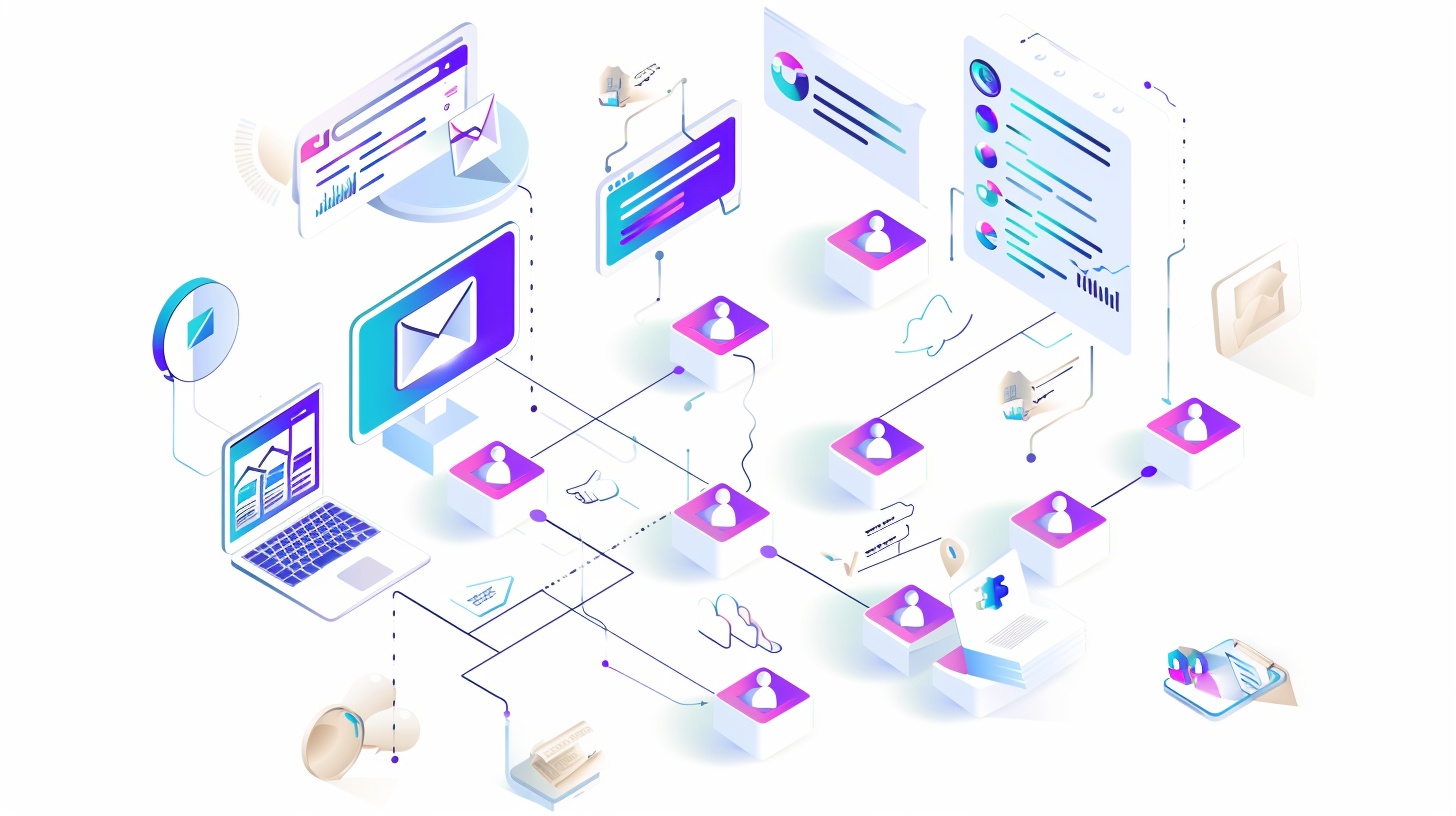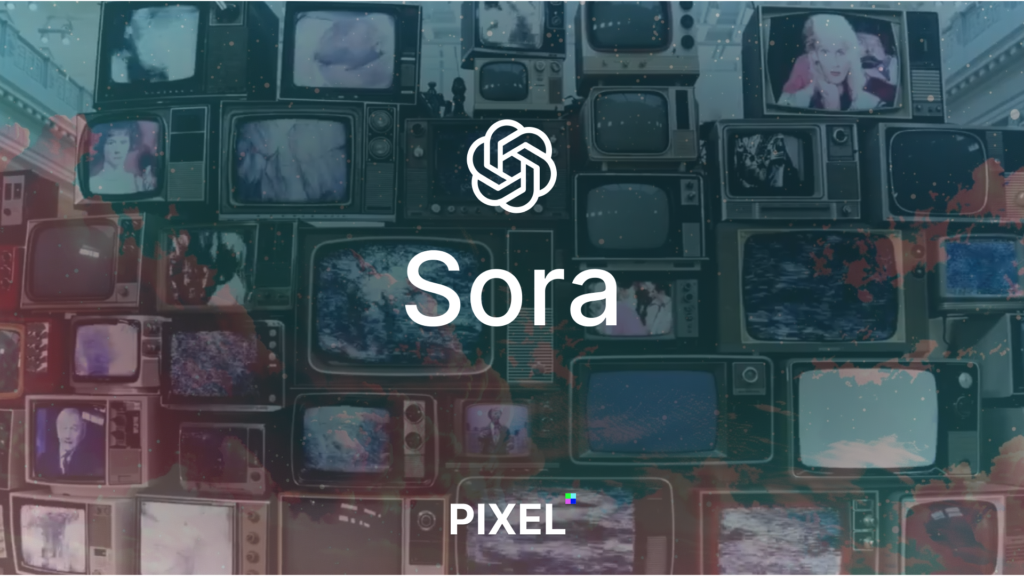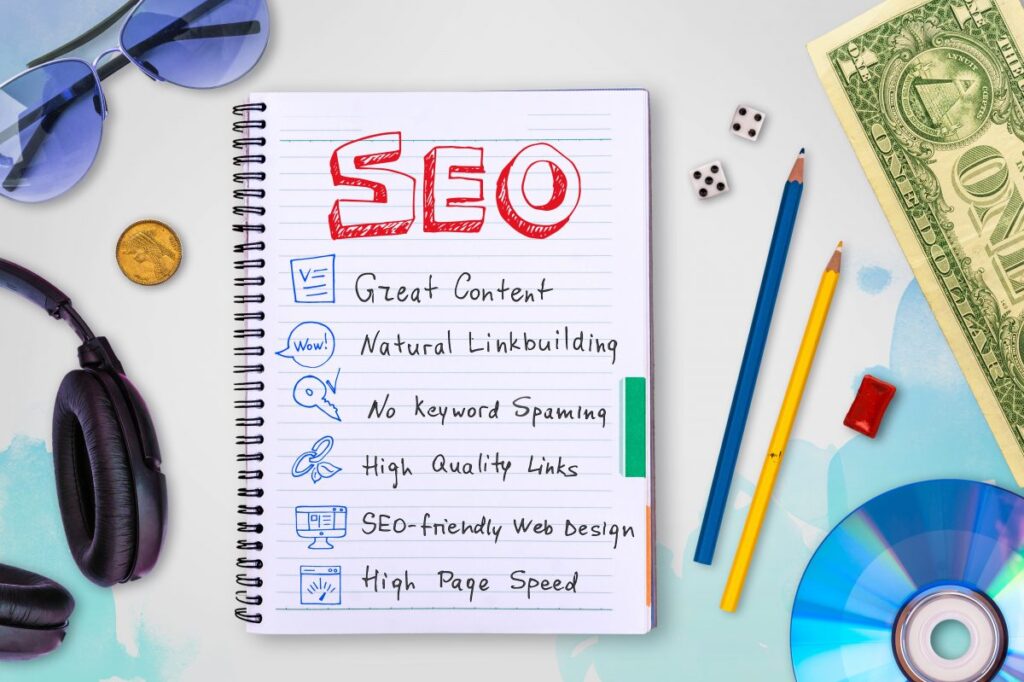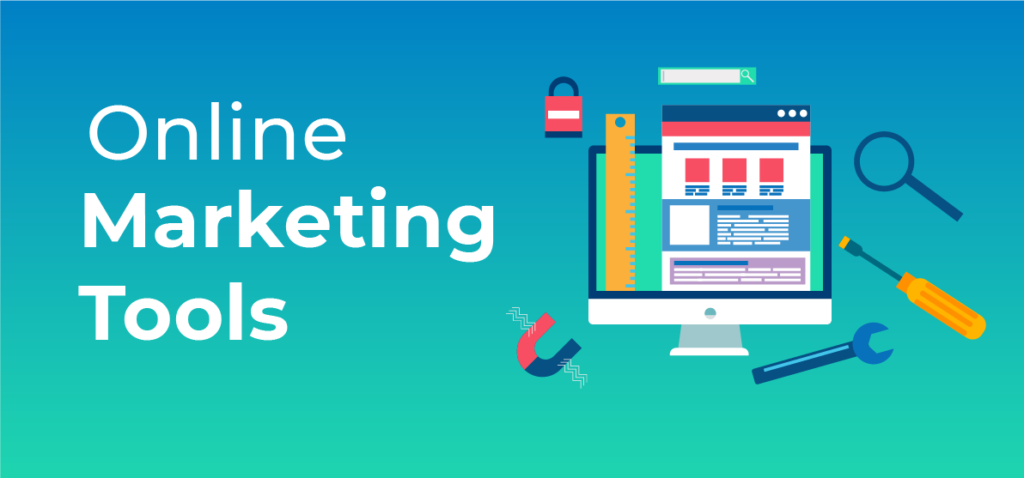Gone are the days when marketing was merely about catchy ads. With attention spans dwindling faster than sand slipping through an hourglass, businesses need to go the extra mile to stand out in a sea of content overload.
This means crafting hyper-focused strategies, personalized experiences, and streamlining automation. Fortunately, that’s precisely the world AI is creating for B2B marketers. Surveys reveal a whopping 83% of executives now prioritize AI in their business, and the reason is crystal clear: AI doesn’t just assist – it transforms.
Overview of AI in B2B Marketing
Importance of B2B content marketing
Say you’ve got a list of potential clients, but it’s a massive one, and going through it manually would take ages. AI can analyze this list in seconds and identify the most promising leads based on factors like past interactions, industry trends, and company size. This means your sales team can focus their energy on the most important prospects and grow their sales.
Currently, 71% of B2B content marketers are prioritizing content marketing. They want their content to stand out from competitors. AI can significantly contribute to this aspect. It helps spot the juiciest trends and determine what your audience craves.
Its natural language processing capabilities can whip up content ideas, improve headlines, and even revamp existing content to make it more appealing and on point.
AI also helps with personalization, segmentation, predictive/perspective analysis, and countless other aspects of B2B marketing. In fact, it would be fair to say that AI makes it smarter, smoother, personalized, and more efficient than before.
How to Use AI in B2B Marketing
AI offers a range of capabilities that align with the evolving needs and expectations of B2B marketers. However, many are still unsure about how to make it work for them. Below, we explore different use cases of AI in B2B marketing.
Client Segmentation
Client segmentation in B2B marketing involves sorting clients based on shared characteristics. It’s crucial because not all clients are the same; they have different needs, behaviors, and values. For instance, a software company might categorize clients based on industry type, company size, and usage patterns.
Before AI, doing it was no less than finding a needle in a haystack. It was time-consuming, often inaccurate, and limited in scope. However, AI has shifted things for the better. Tools like Optimove and Baremetrics leverage AI algorithms to analyze heaps of data and create detailed client segments effortlessly.
You can use them to:
- Get sleek dashboards
- Dig deep into each client segment
- Personalize your approach
- Track client activities
This helps them serve better and boost your bottom line.
Baremetrics in action
Combining Online and Offline Data
Generally, clients interact through various channels. This may include browsing your website, attending conferences, and even picking up the phone to chat.
Each interaction leaves a breadcrumb trail of valuable data. Back in the day, combining this data was as challenging as trying to mix oil and water. In fact, it often results in gaps and inconsistencies.
Fortunately, however, AI-based customer data platforms (CDPs) like Bloomreach, Tealium, and Segment seamlessly combine all customer data—online or offline—and create a 360-degree view of each client. They bridge the gap between digital and real-world interactions to help businesses better understand their clients.
For instance, they help collect, process, and activate customer data in real time. This means that as soon as a customer interacts with the business, whether through a website visit, a social media interaction, or an in-person event, their data is captured and made available for analysis.
Predictive Lead and Behavior Scoring
You may have a bunch of leads in your pipeline. Some could be hot prospects who regularly engage with your content and attend webinars, while others are colder, barely opening your emails.
Predictive lead scoring AI tools consider all these interactions, crunch the numbers, and give each lead a score based on their likelihood to convert. But that’s not all it does. Behavior scoring goes beyond predicting conversions.
It also forecasts how your existing customers will interact with your brand in the future. For instance, if a customer suddenly stops engaging with your emails or shows signs of dissatisfaction, behavior scoring flags them as at-risk and encourages action before it’s too late.
Hubspot’s lead scoring software is an example. It makes predictions with uncanny accuracy and allows you to prioritize your efforts where it matters most.
Personalizing Customer Journeys
Data shows that 61% of B2B marketers struggle (yet seek) to create different content for each stage of the customer journey. With AI in your corner, you can go beyond a one-size-fits-all approach and create experiences that resonate on a personal level.
It tracks customer interactions across various channels and tailors their journey accordingly. Whether it’s sending targeted emails or suggesting relevant content, every touchpoint feels like a natural progression, guiding customers toward their goals with ease.
Content marketing challenges in B2B organizations
Identifying Leads (Convertible and Nonconvertible)
As a marketer, you want to find those sparkling prospects ready to become customers while also understanding those who might need a little more time to nurture. That’s where tools like Monday.com come in handy. While it may not be used primarily, the tool is actually a good lead nurturing platform.
Monday Sales CRM guides you through the lead journey from start to finish. With this feature, you can capture leads from various sources, including your website, social media, and events. Once you’ve got your leads in the net, it assists with lead management. Put simply, it organizes them into neat little categories based on their characteristics and behaviors.
It also helps integrate lead databases seamlessly to keep your information centralized and up to date. Lead nurturing is another feature that keeps your audience engaged and moving through the sales funnel. As such, convertible leads (those ready to make a purchase) get the VIP treatment, while non-convertible are gently nurtured until they’re ripe for picking.
Automating Customer Interactions
Social media and messaging apps offer direct channels to connect with your clients. However, keeping up with these interactions can be overwhelming.
Thankfully, with AI, you can automate conversations and more. AI addresses customer queries and even schedules posts for when the audience is most active. This ensures maximum impact without the late-night hassle.
The same is true for messaging apps.
If you ever chatted with a business and felt like you were talking to a real person, chances are, you were conversing with an AI bot. They handle everything from answering questions to processing orders. HelpScout and Groove are examples of automation tools that make customer interactions smooth as butter.
Personalizing Ads
How many companies use AI-driven personalization
Customization transforms ads from noise into music. It helps deliver messages that resonate with each individual and make them feel seen and understood. No wonder 81% of Gen Z and 57% of Millenials like personalized ads.
Another survey of 1000 US adults shows that 29% of people are more likely to buy a product after viewing a personalized ad. Likewise, 31% believe such ads build brand loyalty.
AI algorithms analyze mountains of data, including browsing history, purchase behavior, and social media activity, to predict what ads your customers are more likely to engage with. This helps capture the audience’s attention and drive meaningful connections with them.
Generating Ad Variations
Say you have a brilliant ad idea, but you want to give it a little twist for different platforms. You can hand over your masterpiece to an AI tool, and it will produce a multitude of variations in no time. What’s more, these variations aren’t carbon copies.
AI often mixes things up and offers different ad sizes, formats, and even messaging to suit various platforms and audiences.
Copy.ai, for instance, helps in this regard. Simply paste the ad URL, persona, and keyword and hit generate ad copy. The tool will instantly get to work and create an ad variation in a snap.
Success Stories of B2B Businesses Using AI in Marketing
The usage of AI has empowered numerous companies to innovate, adapt, and thrive in the competitive business world. Below, we share some examples.
Vanguard
Vanguard using Persado for B2B marketing
Vanguard, an investment giant with a staggering $7 trillion in assets, had a tricky time with advertising. Due to strict regulations in the financial services industry, it could only run ads on LinkedIn.
However, with Persado’s help, the company shook things up. It crafted personalized ads that hit the bullseye on LinkedIn. And the best part? They could test these ads at scale, something they couldn’t do before AI. As a result, they experienced a jaw-dropping 15% boost in their conversion rates.
JPMorgan Chase
Chase teamed up with Persado to revolutionize copywriting for the bank’s Mortgage and Card divisions. In the pilot phase, the results spoke volumes: Chase witnessed click-through rates skyrocketing by as much as 450% on ads crafted by Persado, far surpassing the 50-200% range seen with other methods.
This showed the remarkable power of AI language generation in driving engagement and results.
Top AI Tools for B2B Marketers
More than 80% of marketers globally leverage some form of AI software to streamline their online business-related activities. Below, we’ve enlisted some popular options that help marketers connect, engage, and grow.
For each tool, we assessed their usability and features.
Our aim was to pick those with a minimum learning curve to ensure that users can quickly become proficient without needing extensive training. We also prioritized tools that offer a rich array of features and were admired by users in the past.
Persado
Persado’s ROI
Persado, powered by advanced AI and deep learning models, lets you tap into the ultimate marketing wisdom. The result? Language that speaks directly to each person, motivating them to engage and take action.
Omneky
Omneky in action
Omneky digs into your performance data, learns what works best for your audience, and churns out content accordingly. Its Brand Secure feature ensures that every content piece remains true to your brand.
You simply need to click “Create New Project” and fill in the boxes for Ad type, Emotional appeal, Ad concept, and Target audience, followed by a sample image. The AI tool learns from your brand guidelines and produces impressive work while maintaining brand consistency.
Celtra
Celtra in action
With Celtra, you can say goodbye to manual, time-consuming, and lengthy hours of work. It lets you effortlessly deliver stunning, on-brand campaigns. You can collaborate seamlessly and launch thousands of creatives without breaking a sweat.
The platform also boosts your return on ad spend (ROAS). Tailor-made templates for commerce ads let you test and launch your own creatives across social channels like Facebook and Instagram.
Sensor Tower
Sensor Tower is built on an advanced data science model that gives you data-driven insights for AI app success. The tool also helps you optimize paid channels by analyzing the best-performing mobile ads. This allows you to build a strategy that’s grounded in real-world learning.
The software also empowers you to create data flows that provide invaluable insights into your app’s user base. This means you can target and engage your audience more effectively.
Challenges in Using AI in B2B Marketing
There’s no rose without a thorn, and AI is no exception. It comes with its fair share of hurdles in B2B marketing.
Complex Buying Processes
B2B sale cycles involve numerous people – decision-makers, budget holders, procurement folks- all with their own agendas. Predicting their moves is no different than forecasting the weather in the Amazon rainforest (it’s complicated). Sure, AI can help in this regard by pointing you in the right direction. But the process is still uncertain and not without challenges.
Longer ROI Realization Period
B2B sales aren’t exactly known for their speed. You invest in AI-powered marketing, but the returns aren’t popping up like you expected. It’s more like planting seeds and waiting for the trees to grow. Patience and strategic planning are key here. You’re in it for the long haul.
Limited Training Data
In B2B, the pool of customers is smaller, and they protect their data like treasure. Therefore, it’s challenging to train AI algorithms when you’re working with a handful of data points and a vault of confidentiality. But where there’s a will, there’s a way. Maybe it’s about building strong partnerships, sharing insights (carefully, of course), and expanding that data stream.
Future AI Trends B2B Marketers Should Look Out For
Here’s a glimpse into some exciting AI trends that lie ahead for B2B marketers.
AI-Powered Content Creation
ChatGPT-4 and Wonderdynamics for video creation
Not only can AI produce written content with precision, but it can also help create compelling videos. You can now take a real video, perhaps a bit grainy or lacking in clarity, and transform it into a clearer, crispier version that dazzles the eye using ChatGPT 4 and WonderDynamics.
It’s a high-fidelity production complete with facial expressions, body movements, and lifelike interactions.
And the best part? You have full control and editability. With each element rendered in 3D, you can tweak the video to your heart’s content – adjust the lighting, refine the animation, or even swap out the background.
Predictive and Prescriptive Analytics
Want to know which industries are on the rise? Or which products will be in high demand next quarter? AI has you covered. Predictive analysis provides insights that guide your strategic decisions with unprecedented accuracy. It uses historical data and statistical algorithms to predict what might happen in the future.
Furthermore, prospective analysis takes things a step further by recommending the best actions to take. This results in a more agile B2B marketing approach that puts you ahead of the curve.
Ethical Data Collection in a Cookieless Future
Meta Newsroom tweet about responsible AI innovation
Ethical data collection has become imperative in the cookieless future. Thankfully, AI Alliance takes care of that. It encourages open innovation throughout the AI-driven sphere while upholding safety and security. The aim is to ensure the ethical usage of AI and empower developers and scientists to explore, experiment, and use these technologies to the fullest.
Google Ads’ AI Features
In 2023, Google made waves in the advertising world with a slew of new AI-driven features for Google Ads. Among these innovations, one stood out as particularly intriguing: semi-autonomous ad asset creation.
This cutting-edge tool works its magic and creates custom images, videos, and text tailored specifically for your campaign.
Conclusion
As we wrap up our exploration of AI in B2B marketing, it’s clear that we’re witnessing a thrilling era of innovation and opportunity. From predictive analytics that serves as a guiding light to personalized campaigns that speak directly to prospects’ hearts, AI is here to help marketers and scale businesses.
However, it has its limitations and blind spots. After all, it’s only as good as the data it’s fed and the algorithm it follows. Therefore, it relies on human intervention.
Humans bring a unique perspective and intuition to the table that AI simply can’t replicate. Put simply, AI and humans aren’t rivals but partners to drive business success.
Frequently Asked Questions
What are the emerging technologies in B2B marketing?
Artificial Intelligence (AI), Augmented reality, Predictive and Prescriptive analysis, and automated video creation are some emerging technologies in B2B marketing.
Which processes can AI automate in B2B marketing?
AI can automate several B2B marketing tasks, including lead scoring, ad optimization, content creation, chatbots for customer service, customer segmentation, and more.
What are some potential downsides of AI technologies in B2B marketing?
Data reliability, over-reliance, and ethical concerns are some primary downsides of AI technology in B2B marketing. For instance, these tools are limited to displaying data provided to them, and some businesses might become overly reliant, which may halt creativity in the future. Besides, unethical usage of AI can lead to data breaches.





